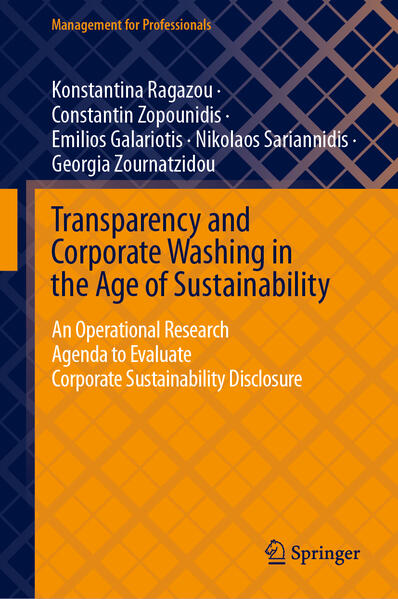
Zustellung: Do, 10.07. - Mi, 16.07.
Versand in 4 Wochen
VersandkostenfreiBestellen & in Filiale abholen:
This book provides a comprehensive analysis of the various frameworks associated with financial corporate washing. It examines the factors influencing these practices and explores their connection to environmental, social, and governance (ESG) strategies, through the use of operations research methods. ESG investors thoroughly evaluate a company's environmental, social, and governance factors before investing, reflecting the growing global emphasis on sustainability. As climate change risks rise and sustainability becomes more important, many organizations have begun to adapt, though some resort to greenwashing, misleadingly presenting their practices as eco-friendly despite ongoing harmful activities.
This book offers a thorough examination of the strategies used by financial institutions, such as greenwashing, bluewashing, social washing, and pinkwashing. It aims to address corporate washing by highlighting its various forms within the financial sector, providing policymakers and stakeholders with insights to develop effective strategies and practices to counteract these deceptive practices.
Inhaltsverzeichnis
Greenwashing: The Misleading Strategies Underlying Environmental Claims. - Greenwashing versus Brownwashing: The Dichotomy of Exaggeration and Undue. - Modesty in Corporate Sustainability Practices. Disclosure. - Board characteristics and greenwashing: An integrated financial investigation using entropy weight and TOPSIS multicriteria decision-making. - Examining the relationship between ESG standards and corporate corruption: Greenwashing' s substantial impact. - Controversies over anti-competition and anti-corruption: assessing anti-ESG variables using Entropy weight-TOPSIS methodologies in the European banking sector.
Produktdetails
Erscheinungsdatum
20. August 2025
Sprache
englisch
Seitenanzahl
116
Reihe
Management for Professionals
Autor/Autorin
Konstantina Ragazou, Constantin Zopounidis, Emilios Galariotis, Nikolaos Sariannidis, Georgia Zournatzidou
Verlag/Hersteller
Produktart
gebunden
Abbildungen
VIII, 116 p. 8 illus., 7 illus. in color.
ISBN
9783031968204
Entdecken Sie mehr
Bewertungen
0 Bewertungen
Es wurden noch keine Bewertungen abgegeben. Schreiben Sie die erste Bewertung zu "Transparency and Corporate Washing in the Age of Sustainability" und helfen Sie damit anderen bei der Kaufentscheidung.









